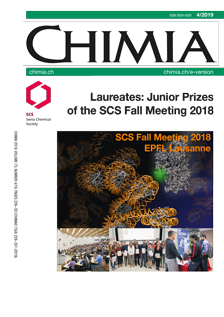Pulsed EPR Methods to Study Biomolecular Interactions
DOI:
https://doi.org/10.2533/chimia.2019.268PMID:
30975255Keywords:
Deer, Orthogonal spin labelling, Pulsed dipolar spectroscopy, Ridme, Site-directed spin labellingAbstract
Orthogonal site-directed spin labelling in combination with pulsed EPR spectroscopy is a powerful approach to study biomolecular interactions on a molecular level. Following a surge in pulse EPR method development, it is now possible to access distance distributions in the nanometre range in systems of complex composition. In this article we briefly outline the necessary considerations for measurements of distance distributions in macromolecular systems labelled with two or more different types of paramagnetic centres. We illustrate the approach with two examples: an application of the Double Electron-Electron Resonance (DEER) method on a triple spin-labelled protein dimer labelled with nitroxide and Gd(III), and an optimisation study of the Relaxation Induced Dipolar Modulation Enhancement (RIDME) experiment for the orthogonal spin pair Cu(II)-nitroxide.Downloads
Published
2019-04-24
Issue
Section
Scientific Articles
License
Copyright (c) 2019 Swiss Chemical Society

This work is licensed under a Creative Commons Attribution-NonCommercial 4.0 International License.
How to Cite
[1]
I. Ritsch, D. Klose, H. Hintz, A. Godt, G. Jeschke, M. Yulikov, Chimia 2019, 73, 268, DOI: 10.2533/chimia.2019.268.







